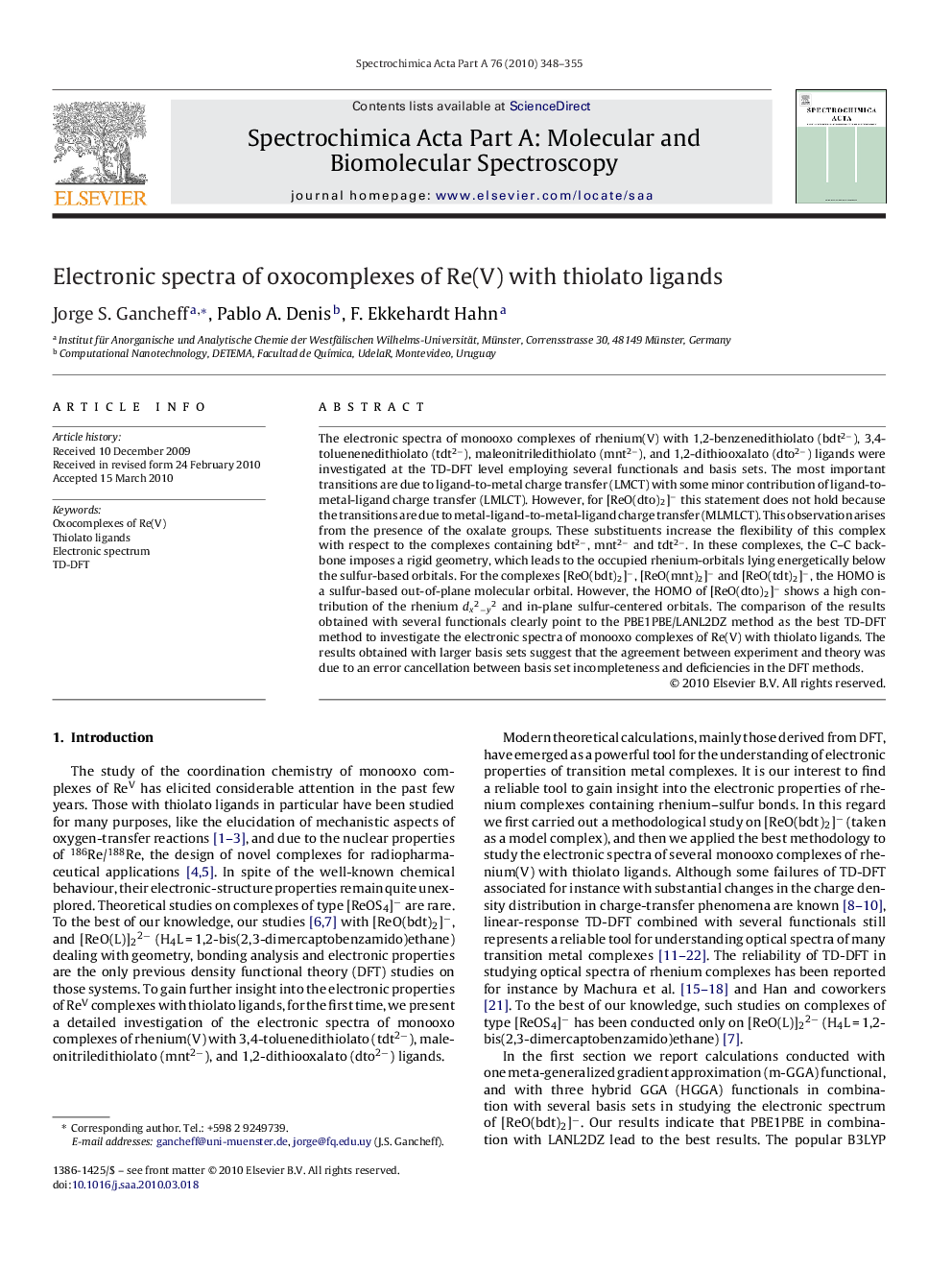| Article ID | Journal | Published Year | Pages | File Type |
|---|---|---|---|---|
| 1234358 | Spectrochimica Acta Part A: Molecular and Biomolecular Spectroscopy | 2010 | 8 Pages |
The electronic spectra of monooxo complexes of rhenium(V) with 1,2-benzenedithiolato (bdt2−), 3,4-toluenenedithiolato (tdt2−), maleonitriledithiolato (mnt2−), and 1,2-dithiooxalato (dto2−) ligands were investigated at the TD-DFT level employing several functionals and basis sets. The most important transitions are due to ligand-to-metal charge transfer (LMCT) with some minor contribution of ligand-to-metal-ligand charge transfer (LMLCT). However, for [ReO(dto)2]− this statement does not hold because the transitions are due to metal-ligand-to-metal-ligand charge transfer (MLMLCT). This observation arises from the presence of the oxalate groups. These substituents increase the flexibility of this complex with respect to the complexes containing bdt2−, mnt2− and tdt2−. In these complexes, the C–C backbone imposes a rigid geometry, which leads to the occupied rhenium-orbitals lying energetically below the sulfur-based orbitals. For the complexes [ReO(bdt)2]−, [ReO(mnt)2]− and [ReO(tdt)2]−, the HOMO is a sulfur-based out-of-plane molecular orbital. However, the HOMO of [ReO(dto)2]− shows a high contribution of the rhenium dx2−y2 and in-plane sulfur-centered orbitals. The comparison of the results obtained with several functionals clearly point to the PBE1PBE/LANL2DZ method as the best TD-DFT method to investigate the electronic spectra of monooxo complexes of Re(V) with thiolato ligands. The results obtained with larger basis sets suggest that the agreement between experiment and theory was due to an error cancellation between basis set incompleteness and deficiencies in the DFT methods.
